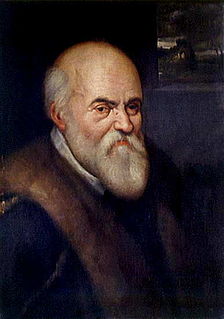 W
WUlisse Aldrovandi was an Italian naturalist, the moving force behind Bologna's botanical garden, one of the first in Europe. Carl Linnaeus and the comte de Buffon reckoned him the father of natural history studies. He is usually referred to, especially in older scientific literature in Latin, as Aldrovandus; his name in Italian is equally given as Aldroandi. The standard author abbreviation Aldrovandi is used to indicate this person as the author when citing a botanical name.
 W
WAntonio Alessandrini.
 W
WCarlo Allioni was an Italian physician and professor of botany at the University of Turin. His most important work was Flora Pedemontana, sive enumeratio methodica stirpium indigenarum Pedemontii 1755, a study of the plant world in Piedmont, in which he listed 2813 species of plants, of which 237 were previously unknown. In 1766, he published the Manipulus Insectorum Tauriniensium.
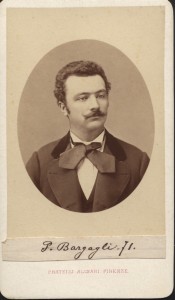 W
WPietro Bargagli was an Italian entomologist who specialised in Coleoptera. His collection is in La Specola and the Istituto Sperimentale per la Zooogia Agraria.He was a member of La Società Entomologica Italiana
 W
WAgostino Bassi, sometimes called de Lodi, was an Italian entomologist. He preceded Louis Pasteur in the discovery that microorganisms can be the cause of disease. He discovered that the muscardine disease of silkworms was caused by a living, very small, parasitic organism, a fungus that would be named eventually Beauveria bassiana in his honor. In 1844, he stated the idea that not only animal (insect), but also human diseases are caused by other living microorganisms; for example, measles, syphilis, and the plague.
 W
WOdoardo Beccari was an Italian naturalist who discovered the titan arum, the plant with the largest unbranched inflorescence in the world, in Sumatra in 1878. This botanist is denoted by the author abbreviation Becc. when citing a botanical name.
 W
WLuigi Bellardi was an Italian malacologist and entomologist who specialised in Diptera.
 W
WAntonio Berlese was an Italian entomologist.
 W
WMario Bezzi was an Italian professor of zoology at the University of Turin. He was also director of the Turin Museum of Natural History. He was a Doctor of Science.
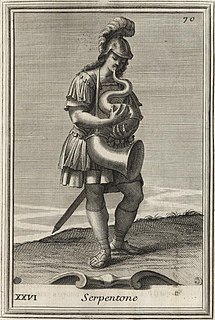 W
WFilippo Bonanni; S.J. or Buonanni was an Italian Jesuit scholar. His many works included treatises on fields ranging from anatomy to music. He created the earliest practical illustrated guide for shell collectors in 1681, for which he is considered a founder of conchology. He also published a study of lacquer that has been of lasting value since his death.
 W
WFranco Andrea Bonelli was an Italian ornithologist, entomologist and collector.
 W
WGiovanni Alfonso Borelli was a Renaissance Italian physiologist, physicist, and mathematician. He contributed to the modern principle of scientific investigation by continuing Galileo's practice of testing hypotheses against observation. Trained in mathematics, Borelli also made extensive studies of Jupiter's moons, the mechanics of animal locomotion and, in microscopy, of the constituents of blood. He also used microscopy to investigate the stomatal movement of plants, and undertook studies in medicine and geology. During his career, he enjoyed the patronage of Queen Christina of Sweden.
 W
WLorenzo Camerano was an Italian herpetologist and entomologist.
 W
WAngelo Celli was an Italian physician, hygienist, parasitologist and philanthropist known for his pioneering work on the malarial parasite and control of malaria. He was Professor of Hygiene at the University of Palermo, and then at the Sapienza University of Rome. He founded the Pasteur Institute of Italy. With his wife Anna Fraentzel he established a number of medical schools in the Roman Campagna and dispensaries in Rome. He and Ettore Marchiafava correctly described the protozoan parasite that caused malaria and gave it the scientific name Plasmodium in 1885. Understanding the nature of malaria, he was among the first scientists to advocate and work for eradication of insects to prevent infectious diseases. He was elected to the Senate of the Kingdom of Italy in 1892.
 W
WDomenico Maria Leone Cirillo FRS was an Italian physician, entomologist, botanist and patriot.
 W
WEmilio Cornalia was an Italian naturalist. He was born in Milan and died in the same city. He was conservator from 1851 to 1866, and director from 1866 till his death, of the Milan Museum of Natural History, and was interested in all areas of biology.
 W
WAchille Costa was an Italian entomologist appointed director of the Zoological Museum of Naples. He founded the entomological collections in Naples and described many new species.
 W
WAntonio Curò was an Italian engineer, mountaineer and entomologist.
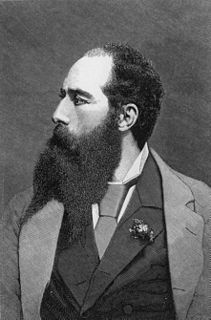 W
WLuigi Maria D'Albertis was an Italian naturalist and explorer who, in 1875, became the first Italian to chart the Fly River in what is now called Papua New Guinea. He undertook three voyages up this river from 1875 to 1877. The first was conducted in the steamer SS Ellengowan and the other two in a smaller ship named the "Neva" which was chartered from the Government of New South Wales. Throughout the three voyages, D'Albertis was consistently involved in skirmishes with the various indigenous people living along the river, using rifle-fire, rockets and dynamite to intimidate and, on occasions, kill these local people. He also frequently employed destructive dynamite fishing as a technique of obtaining aquatic specimens for his collection. His expedition stole many ancestral remains, tools and weapons from the houses of the locals. He also collected specimens of birds, plants, insects and the heads of recently killed native people. Contemporary explorers and colonial administrators of d'Albertis were almost universally critical of the methods employed by D'Albertis in his expeditions up the Fly and more modern accounts, such as Goode's "Rape of the Fly" are equally condemnatory.
 W
WGiacomo Giuseppe Federico Delpino was an Italian botanist who made early observations on floral biology, particularly the pollination of flowers by insects. Delpino introduced a very broad view of plant ecology and was the first to suggest pollination syndromes, sets of traits associated with specific kinds of pollinators. He wrote Pensieri sulla Biologia Vegetale in 1867 and this failed to gather sufficient notice due to it being written in Italian. He corresponded with Charles Darwin and was one of the first to speculate on the idea of "plant intelligence".
 W
WAgostino Dodero was an Italian entomologist. A major collector of insects, particularly beetles and known for his collections of subterranean species, he is credited with the discovery of the first Protura specimens.
 W
WMarquis Giacomo Doria was an Italian naturalist, botanist, herpetologist, and politician.
 W
WCarlo Emery was an Italian entomologist. He is remembered for Emery's rule, which states that insect social parasites are often closely related to their hosts.
 W
WLeonardo Fea was an Italian explorer, zoologist, painter, and naturalist.
 W
WCarlo Giuseppe Gené was an Italian naturalist and author.
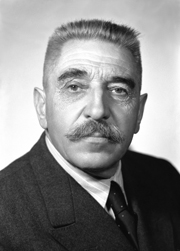 W
WMichele Gortani was an Italian geologist, entomologist, and politician. He was a specialist on the Carnian Alps where he grew up and worked for much of his life.
 W
WGiovanni Battista Grassi was an Italian physician and zoologist, best known for his pioneering works on parasitology, especially on malariology. He was Professor of Comparative Zoology at the University of Catania from 1883, and Professor of Comparative Anatomy at Sapienza University of Rome from 1895 until his death. His scientific contributions covered embryological development of honey bees, on helminth parasites, the vine parasite phylloxera, on migrations and metamorphosis in eels, and on termites. He was the first to describe and establish the life cycle of the human malarial parasite, Plasmodium falciparum, and discovered that only female anopheline mosquitoes are capable of transmitting the disease. His works in malaria remain a lasting controversy in the history of Nobel Prizes, because a British army surgeon Ronald Ross, who discovered the transmission of malarial parasite in birds was given the 1902 Nobel Prize in Physiology or Medicine. But Grassi, who demonstrated the complete route of transmission of human Plasmodium, and correctly identified the types of malarial parasite as well as the mosquito vector, Anopheles claviger, was denied.
 W
WGiorgio Jan was an Italian taxonomist, zoologist, botanist, herpetologist, and writer. He is also known as Georg Jan or Georges Jan.
 W
WPaolo Lioy was an Italian naturalist, redshirt patriot and politician.
 W
WEttore Marchiafava was an Italian physician, pathologist and neurologist. He spent most of his career as professor of medicine at the University of Rome. His works on malaria laid down the foundation for modern malariology. He and Angelo Celli were the first to elucidate living malarial parasites in human blood, and able to distinguish the protozoan parasites responsible for tertian and benign malaria. In 1885 they gave the formal scientific name Plasmodium for these parasites. They also discovered meningococcus as the causative agent of cerebral and spinal meningitis. Marchiafava was the first to describe syphilitic cerebral arteritis and degeneration of brain in an alcoholic patient, which is now eponymously named Marchiafava's disease. He gave a complete description of a genetic disease of blood now known Paroxysmal nocturnal hemoglobinuria or sometimes Strübing-Marchiafava-Micheli syndrome, in honour of the pioneer scientists. He was personal physician to three successive popes and also to House of Savoy. In 1913 he was elected to Senate of the Kingdom of Italy. He founded the first Italian anti-tuberculosis sanatorium at Rome. He was elected member of the Accademia dei Lincei, becoming its Vice-president in 1933.
 W
WFrancesco Minà-Palumbo was an Italian naturalist who made the first significant studies of the natural history of Sicily. Palumbo graduated in medicine at the Palermitano Athenaeum. He then continued his studies in Naples. He returned to Castelbuono both a medical doctor and a professional agronomist and began, in his spare time, the systematic exploration of Madonie it:Madonie making collections and finding and documenting the geology, hydrology, climate, botany, and zoology of the region. This culminated in 1844 with his first published work, Introduzione alla Storia Naturale delle Madonie.
 W
WGiovanni Passerini was an Italian botanist and entomologist, born on June 16, 1816 in Pieve di Guastalla. He died on April 17, 1893 in Parma.
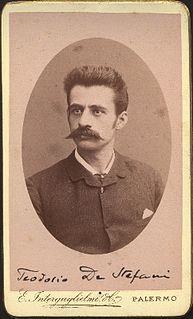 W
WTheodosio De Stefani Perez was an Italian naturalist and entomologist who specialised in Hymenoptera and Diptera.
 W
WVincenzo Petagna was an Italian biologist, physician and entomologist. He was appointed as director of Monte Oliveto botanical gardens. He was also the teacher of Antonio Savaresi. The plant Petagnaea gussonei has been named after him.
 W
WGiuseppe Saverio Poli was an Italian physicist, biologist and natural historian.
 W
WOrazio Querci was an Italian entomologist mainly interested in butterflies. Querci established a butterfly dealership in Florence.
 W
WFrancesco Redi was an Italian physician, naturalist, biologist and poet. He is referred to as the "founder of experimental biology", and as the "father of modern parasitology". He was the first person to challenge the theory of spontaneous generation by demonstrating that maggots come from eggs of flies.
 W
WCamillo Róndani was an Italian entomologist noted for his studies of Diptera.
 W
WPietro Rossi was an Italian scientist and entomologist.
 W
WFilippo Silvestri was an Italian entomologist. He specialised in world Protura, Thysanura, Diplura and Isoptera, but also worked on Hymenoptera, Myriapoda and Italian Diptera. He is also noted for describing and naming the previously unknown order Zoraptera. In 1938 he was nominated to the Pontifical Academy of Sciences, the scientific academy of the Vatican.
 W
WLazzaro Spallanzani was an Italian Catholic priest, biologist and physiologist who made important contributions to the experimental study of bodily functions, animal reproduction, and animal echolocation. His research on biogenesis paved the way for the downfall of the theory of spontaneous generation, a prevailing idea at the time that organisms develop from inanimate matters, though the final death blow to the idea was dealt by French scientist Louis Pasteur a century later.
 W
WAdolfo Targioni Tozzetti was an Italian entomologist who specialised in Sternorrhyncha. He was Professor of Botany and Zoology in Florence, associated with Museo di Storia Naturale di Firenze where his collection remains today at La Specola. He was especially interested in pest species, mainly mealybugs, scale insects and other pests that attack citrus and peaches. He described many new taxa.
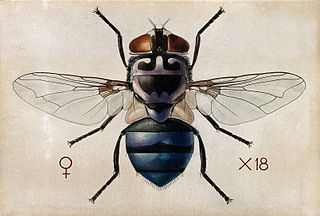 W
WAmedeo John Engel Terzi was an Italian illustrator and entomologist specialising in Diptera, the true flies.
 W
WMario Tirelli was an Italian entomologist.
 W
WEmilio Turati was an Italian entomologist who specialised in Lepidoptera. He is not to be confused with Ernesto Turati and Gianfranco Turati.
 W
WRuggero Verity or Roger Verity was an Anglo-Italian entomologist who specialised in butterflies and a physician.
 W
WEnrico Verson was an Italian entomologist,
 W
WCount Giuseppe Ginanni or Zinanni was an Italian naturalist.